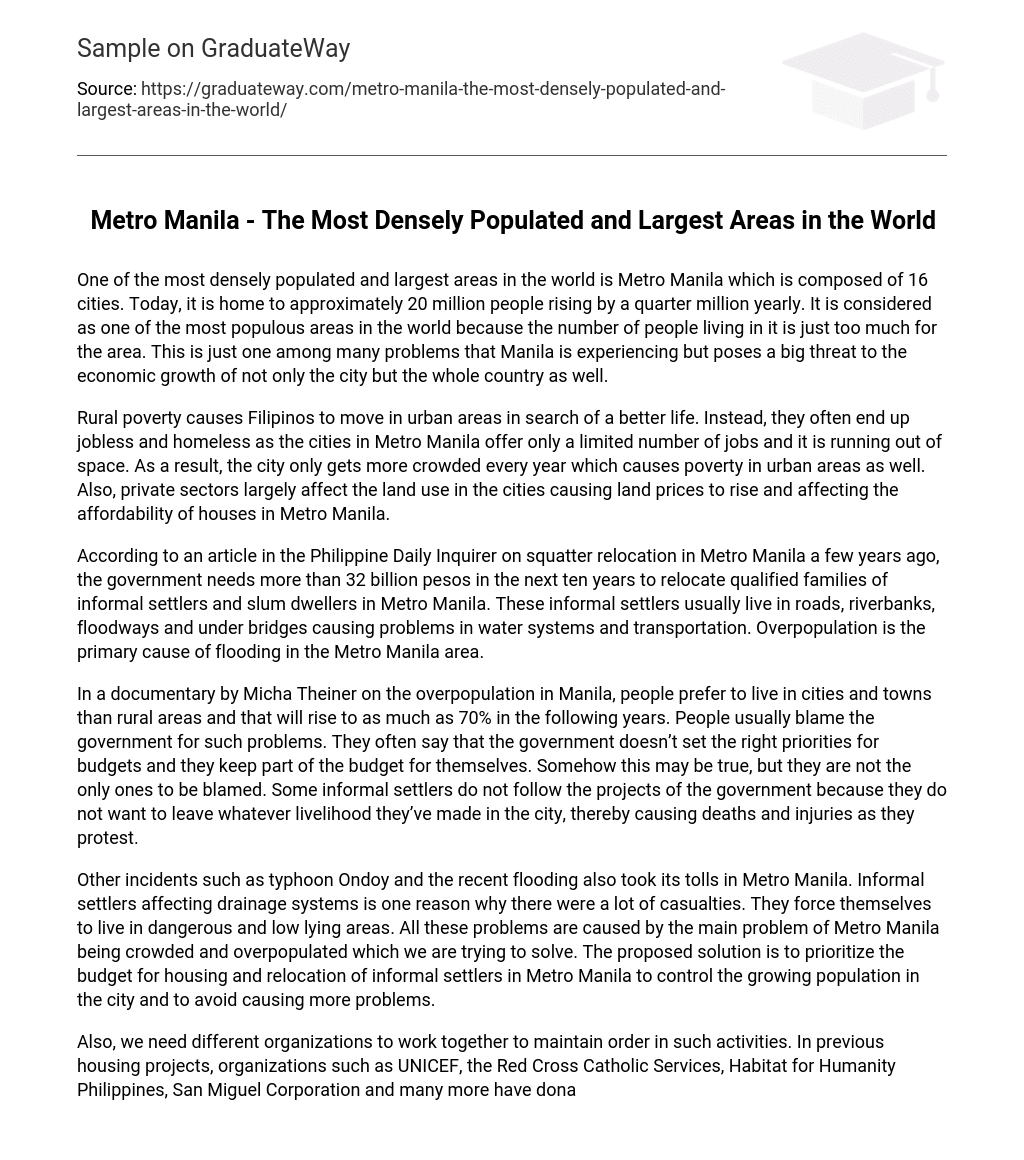One of the most densely populated and largest areas in the world is Metro Manila which is composed of 16 cities. Today, it is home to approximately 20 million people rising by a quarter million yearly. It is considered as one of the most populous areas in the world because the number of people living in it is just too much for the area. This is just one among many problems that Manila is experiencing but poses a big threat to the economic growth of not only the city but the whole country as well.
Rural poverty causes Filipinos to move in urban areas in search of a better life. Instead, they often end up jobless and homeless as the cities in Metro Manila offer only a limited number of jobs and it is running out of space. As a result, the city only gets more crowded every year which causes poverty in urban areas as well. Also, private sectors largely affect the land use in the cities causing land prices to rise and affecting the affordability of houses in Metro Manila.
According to an article in the Philippine Daily Inquirer on squatter relocation in Metro Manila a few years ago, the government needs more than 32 billion pesos in the next ten years to relocate qualified families of informal settlers and slum dwellers in Metro Manila. These informal settlers usually live in roads, riverbanks, floodways and under bridges causing problems in water systems and transportation. Overpopulation is the primary cause of flooding in the Metro Manila area.
In a documentary by Micha Theiner on the overpopulation in Manila, people prefer to live in cities and towns than rural areas and that will rise to as much as 70% in the following years. People usually blame the government for such problems. They often say that the government doesn’t set the right priorities for budgets and they keep part of the budget for themselves. Somehow this may be true, but they are not the only ones to be blamed. Some informal settlers do not follow the projects of the government because they do not want to leave whatever livelihood they’ve made in the city, thereby causing deaths and injuries as they protest.
Other incidents such as typhoon Ondoy and the recent flooding also took its tolls in Metro Manila. Informal settlers affecting drainage systems is one reason why there were a lot of casualties. They force themselves to live in dangerous and low lying areas. All these problems are caused by the main problem of Metro Manila being crowded and overpopulated which we are trying to solve. The proposed solution is to prioritize the budget for housing and relocation of informal settlers in Metro Manila to control the growing population in the city and to avoid causing more problems.
Also, we need different organizations to work together to maintain order in such activities. In previous housing projects, organizations such as UNICEF, the Red Cross Catholic Services, Habitat for Humanity Philippines, San Miguel Corporation and many more have donated funds and integrated resources for it. The National Housing Authority and the Housing and Urban Development council determine the income level and loanable amounts for borrowers and administer low cost housing and development. Prioritizing the budget is necessary for more families to be moved in a shorter period.
There are still a lot of vacant areas in rural places where these informal settlers may be relocated. Although such solution is given, having enough funds and resources in the given period will be a risk as our government are solving different problems simultaneously. We need to save enough funds for such plans to push through. We also need careful construction of the houses and proper execution of the relocation itself. The most important factor would be the faith on the authorities and obedience of those being relocated to ensure a safe and orderly relocation project.





